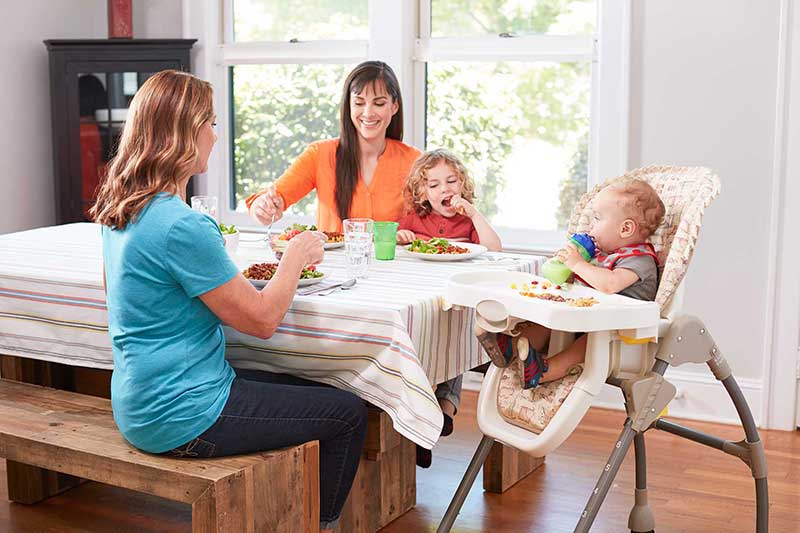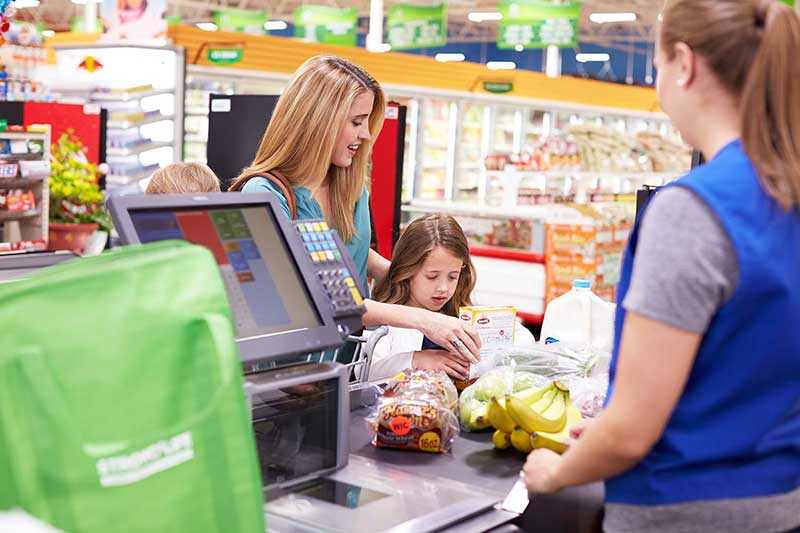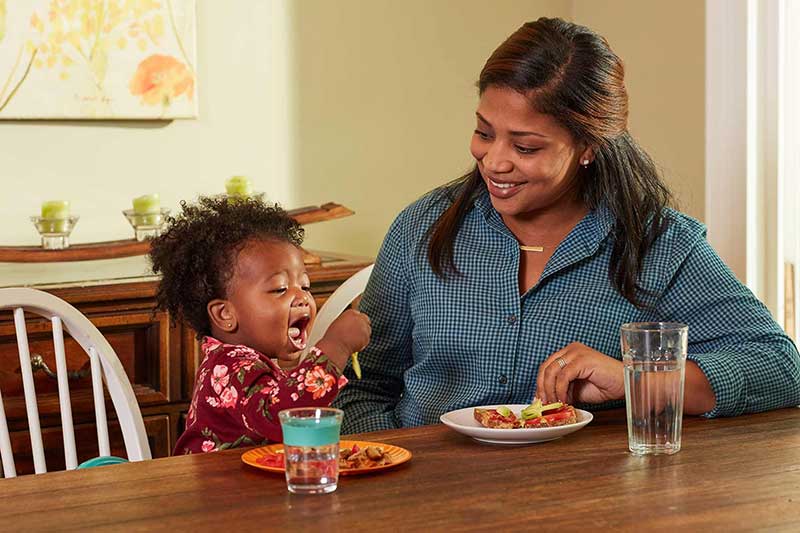Surprising Ways to Cut Down on Food Waste
Did you know nearly 40 percent of food in the U.S. is wasted? We know planning and prepping meals for a family is a balancing act. Try these tips to keep vegetables and fruit fresh, get the most out of your pantry staples and cut down on food waste.
In this article:
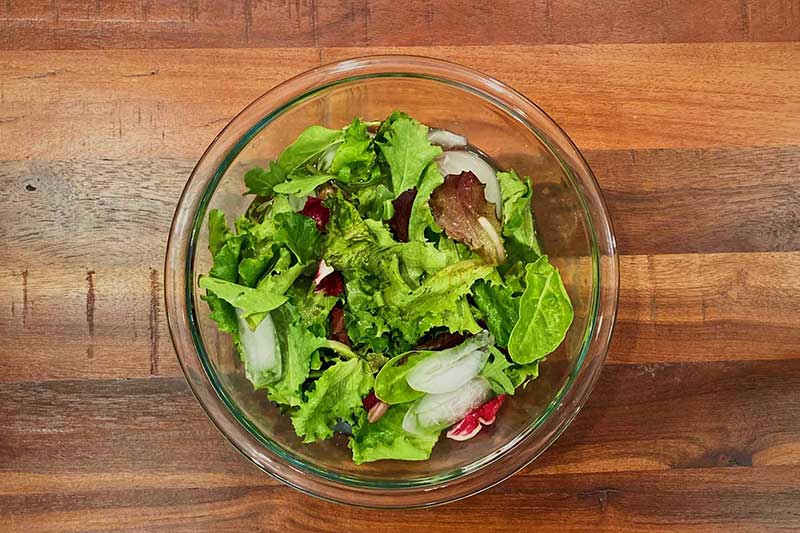
Give your food its second wind
If you have food nearing the end of its shelf life, try reviving it or using it up.
- Soak celery, lettuces and leafy greens in ice water for 15 minutes if they look a bit limp.
- Don’t toss leftover veggies. Add them to soups, eggs, pasta dishes and casseroles.
- Use lemons as an all-purpose cleaner: Combine ¼ cup white vinegar, 2 tablespoons baking soda, 4 cups hot water and ½ the juice of a lemon (with the rind) in a spray bottle. Remember to keep all cleaning supplies out of reach of children.
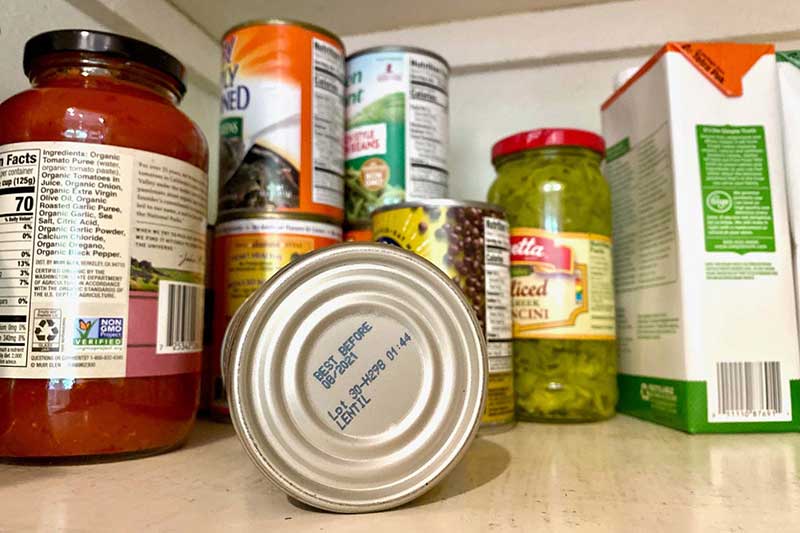
Outsmart food label dates
You don’t have to toss all food based on the date printed on its label. Use your judgment about how food looks and smells before tossing.
- “Best by” isn’t an expiration date—it’s a suggestion for the time the product will be at its best flavor and quality. Milk, eggs and yogurt are usually good for up to a week after their best-by dates.
- “Use by” is the last date for a product’s ideal flavor and quality, but it doesn’t mean the food has expired.
- “Sell by” is the date the food should be removed from the store shelf, but it doesn’t mean the product has expired.
- “Expiration” is the last day you should eat or drink the product.
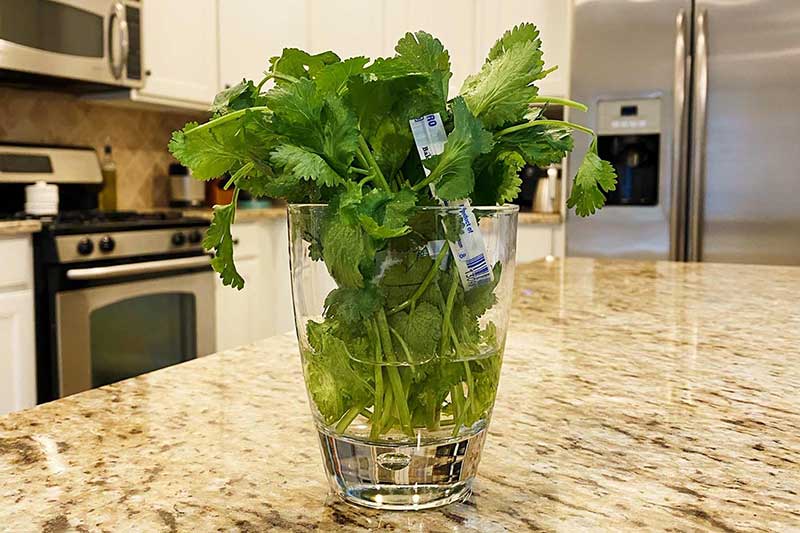
Try these smart storage tips
Keep these tips in mind when putting away your veggies and fruits. They could mean the difference between an extra meal and tossed food.
- Let bananas, peaches, plums, avocados and melon ripen fully on the counter before storing them in the fridge.
- Apples can cause other produce to ripen faster, so store them in a separate bag in the fridge.
- Onions and potatoes can make one another sprout, so it’s best to keep these two pantry staples separate.
- Keep mushrooms in a paper bag in the fridge to help prevent mold.
- Put cut herbs in a glass of water to keep them hydrated and fresh.
- Store asparagus in a cup of water in the fridge with a loose plastic bag over top to keep it fresher longer.
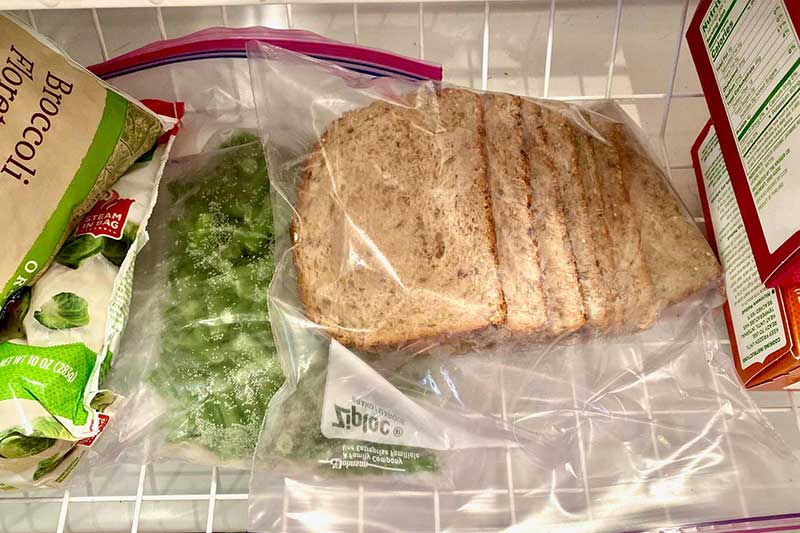
Embrace the magic of your freezer
Make space in your freezer to help extend the shelf life of these foods. Place items in the fridge to thaw a day or 2 before you plan to use them.
- Milk. Remove some milk before freezing because it expands. Milks lower in fat freeze and thaw well for drinking—but you can still freeze and thaw whole milk, cream and sour cream for baking and cooking.
- Bread, buns and tortillas. To help reduce freezer burn, try storing these items in a zip-top freezer bag.
- Overripe bananas. Take bananas out of the skin, place in a freezer bag, and save for banana bread or future recipes.
- Grapes and berries. Wash and spread grapes and berries on a tray. Place the tray in the freezer, and then transfer fruit to a freezer bag when frozen through.
- Sauces and broth. If you have these items open but unfinished in your fridge, transfer them to the freezer.
- Meat and fish. Tightly wrap raw meat or fish in plastic wrap. Then add a layer of aluminum foil or seal it inside a zip-top freezer bag. Meat and fish stored this way can keep in your freezer for 3 months. After that, there’s a risk of freezer burn.
- Avocados. Cut avocados in half and take the seed out before freezing. You can freeze in halves, in cubes, mashed or in slices—you choose!
- Herbs. Freeze chopped herbs in an ice cube tray with a tablespoon of olive oil.
- Cheese, butter, flour, hummus, rice and pasta can also be frozen.
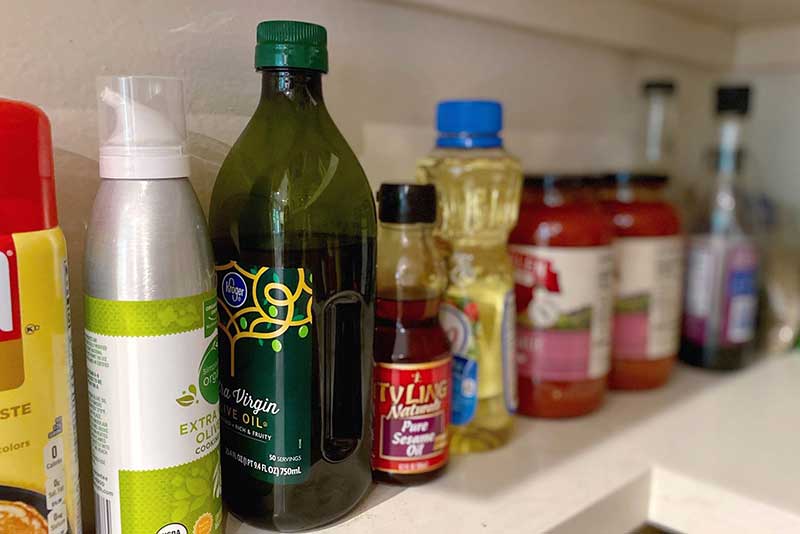
Remember storage and serving basics
Sometimes the simplest solutions can make a big impact. Try these tips when prepping, serving and storing family meals.
- Store leftovers in clear containers toward the front of your fridge. This way, you can see what’s in them and won’t forget to add them to your meal plan for the week. (Or worse—forget they exist!)
- Serve meals family style so everyone can choose the right amount of food for their plate. And trust your kids’ hunger and fullness cues—they know when they want more or are all done.
- Store oils, vinegar and unopened sauces in a cool, dry place to prevent them from spoiling.
